When a team loses 24 of 35 games, conceding 85 goals in the process, it’s never going to be easy to stand out. It’s even more difficult in the case of a defender and even more so when it’s a defender in only his second full season of first-team football. Yet that is the case of Elvis Bwomono at Southend United in League One.
The club’s player of the month for six consecutive months until his fellow young full-back Tom Clifford won the award in February, Bwomono has excelled since being given his debut at the club under Phil Brown. Since then, Bwomono has worked under both Chris Powell and Kevin Bond, more renowned for their careers as coaches rather than managers, before former Arsenal and Tottenham ace Sol Campbell took over at Roots Hall.
This scout report will provide a tactical analysis of Bwomono’s game in the EFL which has caught the eye of numerous League One and Championship clubs with rumours of interest in January. The club has already acted to extend his contract until the summer of 2021, but Bwomono may well be reluctant to drop into League Two after being the club’s best performer by some distance. This analysis will consider the tactics of his game.
His role
Primarily, he operates as a right-back ever since he has broken into the team. In this role, he brings great strength to the team in an offensive sense and spends much of his time on the ball bombing down the wing.
However, when not on the ball himself, he will tend to stick to a defensive role and is not regularly seen at the far post. In this sense, he is a fairly disciplined defender in terms of his positioning. Even when getting forward, it is fairly rare to see him reach the byline, instead preferring to deliver a pass as he enters the final third, rather than going the full distance himself.
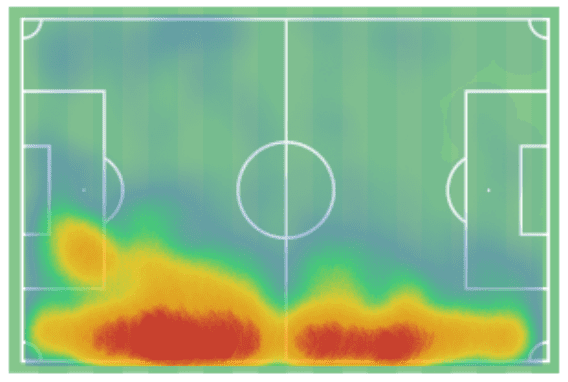
This is reflected in his heatmap that shows how by primarily positioning himself in his own half, he can be found getting forward and attacking opposition defences regularly. This provides a strong blend of offensive flair with defensive reliability.
One of his strengths is that he is a very flexible player. With Cyprus captain Jason Demetriou for competition and cover, Campbell has not hesitated to use Bwomono elsewhere in either a more advanced position on the right as a wing-back or even midfielder, or on the right of a three-man central defence. As this graph shows, right-back remains his primary position and accounts for over half of his minutes played.
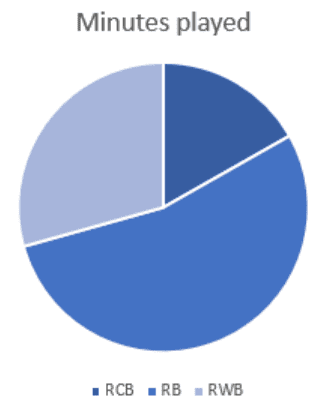
It is easy to see why this is the case. Bwomono has been effective whilst playing as a central defender, as proven by his high success rate in the defensive field in the position, an improvement of almost 20% compared to when playing at full-back.
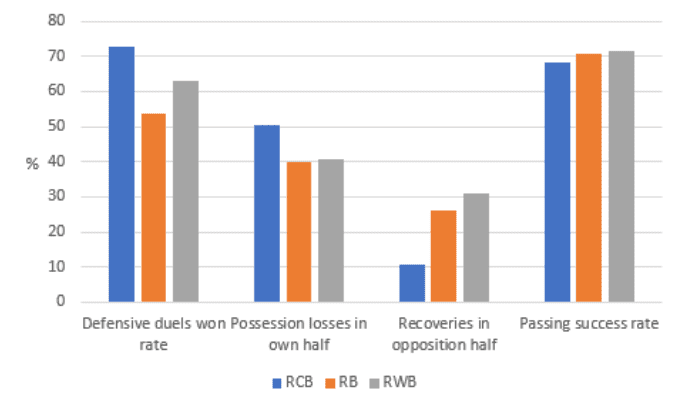
However, there are also drawbacks when relying more upon the defensive side of his game. Primarily that lies within two factors. One of these is that it makes a greater vulnerability of Bwomono’s defensive weaknesses, primarily his risk-taking. Tending to prefer dribbles or risky passes, he lacks the discipline of a central defender and whilst his possession losses over do not vary greatly, over 10% more of them come in his own half posing a great danger.
Secondly, it removes many of the strengths of Bwomono’s game. His pace and high pressing, using his energy to look to cut out counter-attacks at source if he is caught out when high up the field. This is a key factor for Southend in a team lacking this pace and work-rate to provide any kind of press high up the field.
Strengths
Bwomono is a clearly intelligent player who positions himself well and generally tends to show good judgement of when to take evaluated risks when on the ball. He fits well into the tactical system and even as he has been used in various positions, he has adapted quickly and found a way to change his game to suit the requirements of his new position. This, in particular, is reflected by his role in the transition and his defensive positioning.
Dribbling and transition
As mentioned, few players in the Southend team possess the pace of and technical ability of Bwomono. This proves most valuable when in possession and in transition as he will regularly be the man responsible for bringing the ball forward from deep, far more so than any other figure in Southend’s defence and even more than many of the central midfielders who are regularly more defensive than offensive-minded.
With 1.91 progressive runs and 3.81 dribbles per 90 minutes, these are impressive statistics for a defender in a team fighting relegation. Tactically, Campbell sets the team up to allow this. Mark Milligan or Timothy Dieng will often drop back into the backline, with John White drifting right in order to cover the gap as he moves forward, with Bwomono relying more upon wide support and forward runs rather than support from the middle.
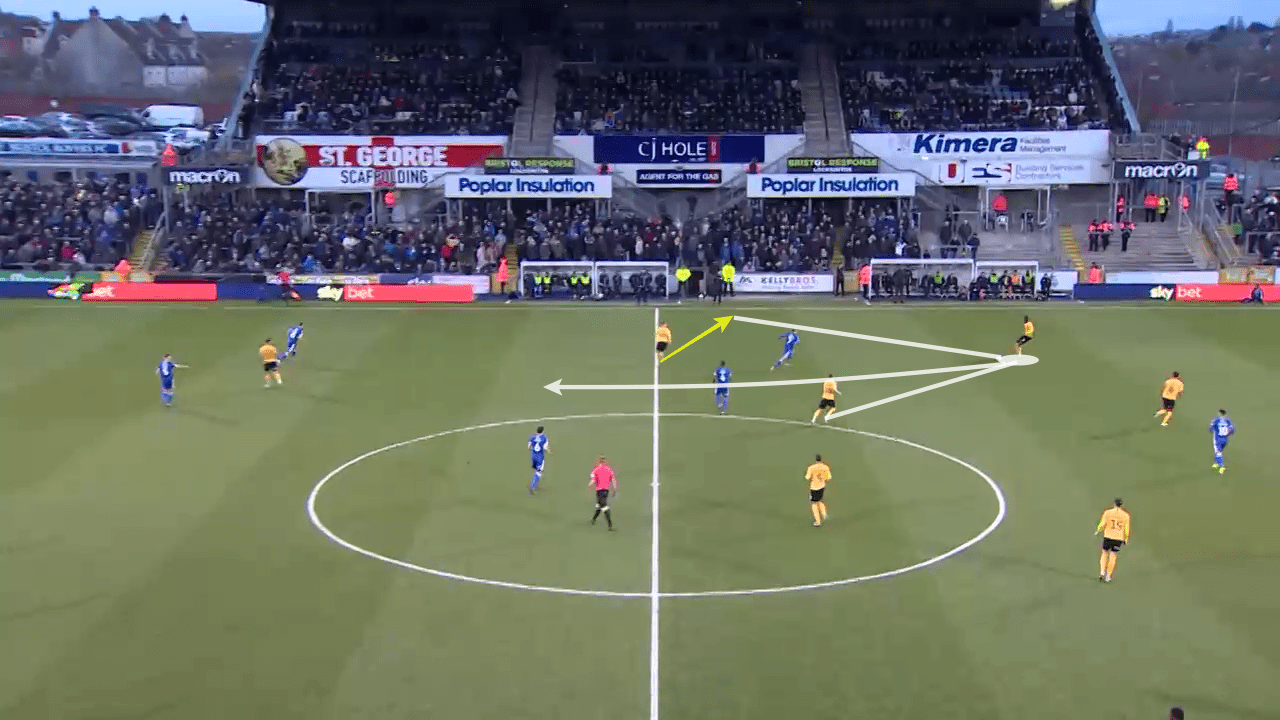
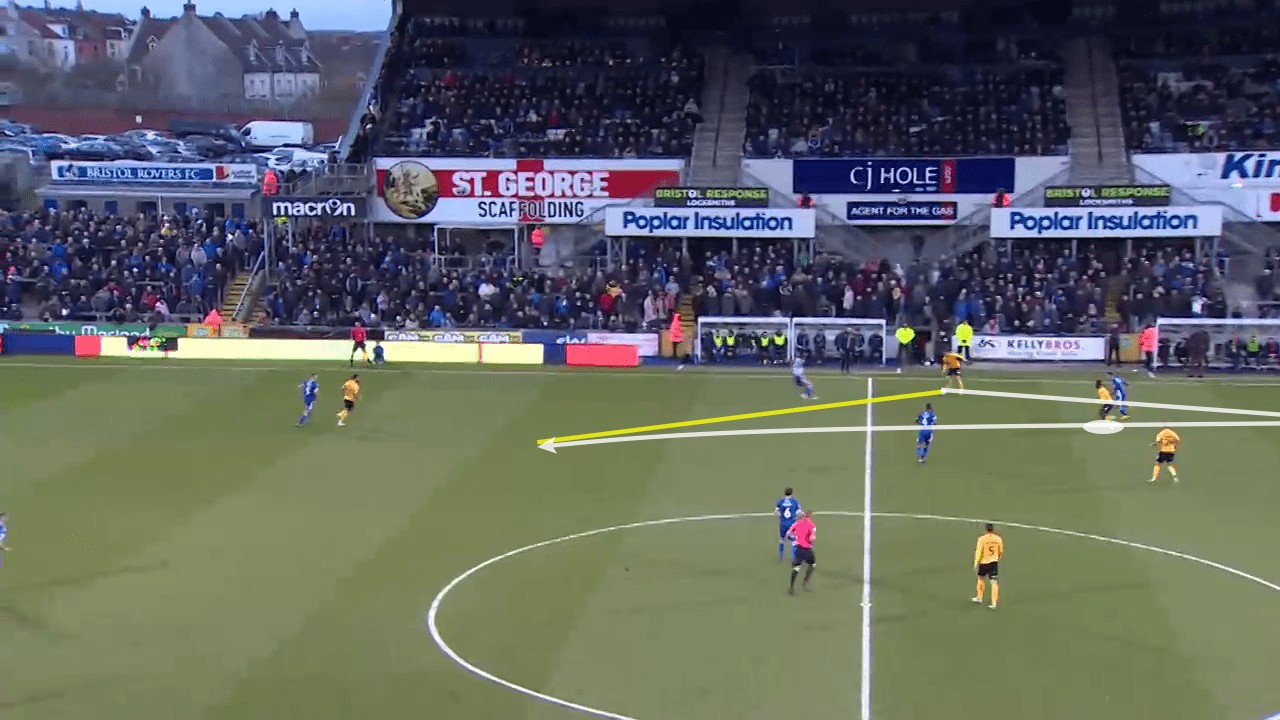
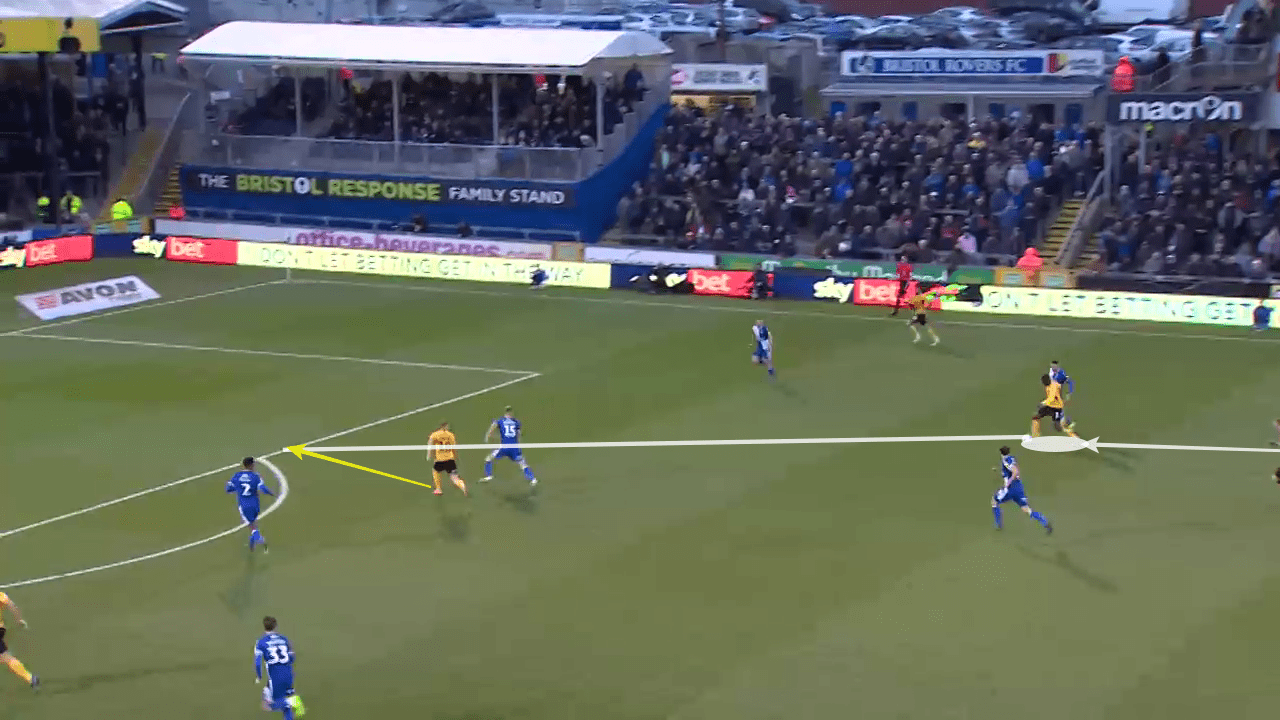
When this is the case, he will often look to link up with the wide man. Quick one-twos such as this example against Bristol Rovers reflect the way Bwomono looks to create space ahead of him when it is not available and to move the ball forward before laying off a pass as he enters the final third. Such moves, where he carries the ball 50 yards, are essential and are part of why his ball progression per minute at 2.85 metres is among the highest in the squad.
In a more offensive team with more time on the ball, Bwomono’s talents could be exploited. Without a regular winger playing ahead of him at any time this season, the real challenge could be how Bwomono would adapt to working alongside such a figure. His overlapping technique is yet to gain much experience at first-team level and while he has shown that he can go it alone, in a team struggling to transition, it will be a challenge which any future club may wish to consider.
Defensive positioning
Another essential factor within Bwomono’s strengths is his positioning defensively. Whilst such marauding full-backs can often leave gaps defensively, Bwomono does this rarely. While the team is set up tactically to protect him, his pace and defensive work-rate mean that he is often one of the first men back. This enables him to position himself well when opposition teams counter-attack.
This is probably one of the reasons why Campbell has experimented with Bwomono as a right-sided central defender. At times, Demetriou has been given the role of the more offensive player with Bwomono trusted more to take care of the defensive responsibilities. Essentially, he also brings pace to a defence which is sorely lacking any, enabling a close tracking of quick centre forwards.
Likely aided by the experience and coaching of Campbell – an elite defender in his days as a player, he has substantially improved on this aspect of his game with regards to his body positioning. By moving with pace but while keeping his body open, he can drive the attacker wide without risking being caught out in behind. This forces the ball to the touchline.
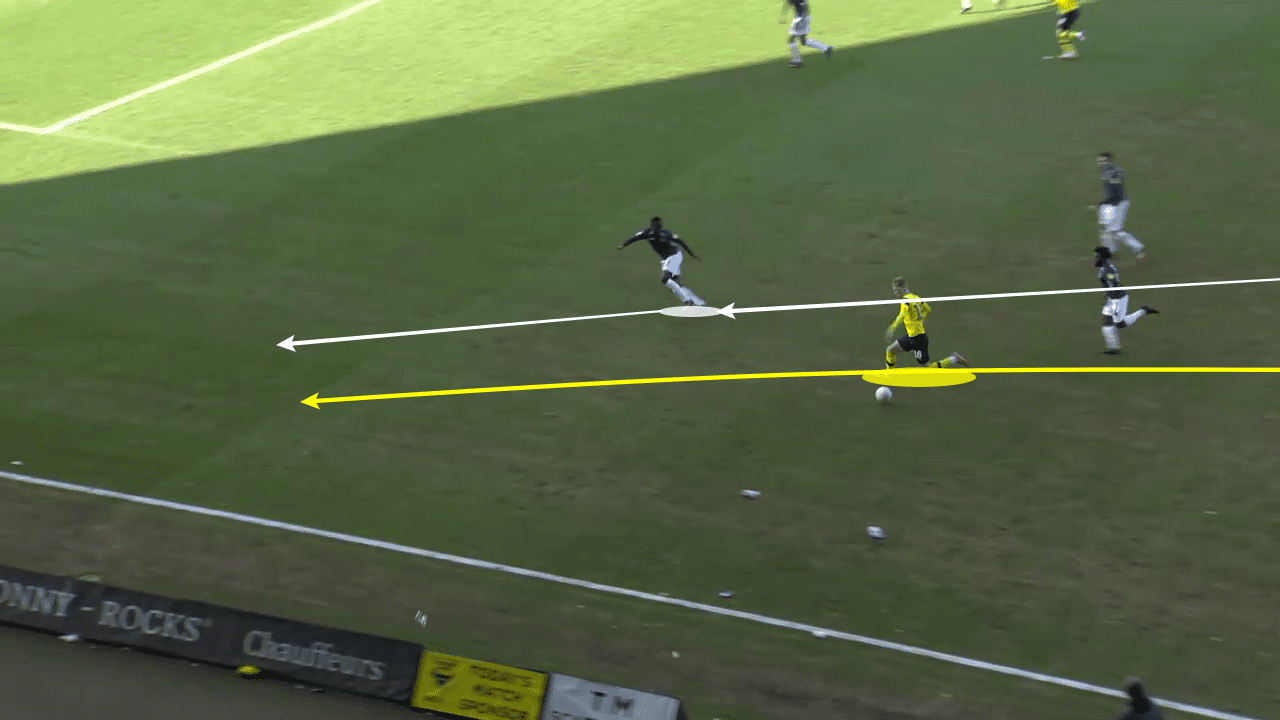
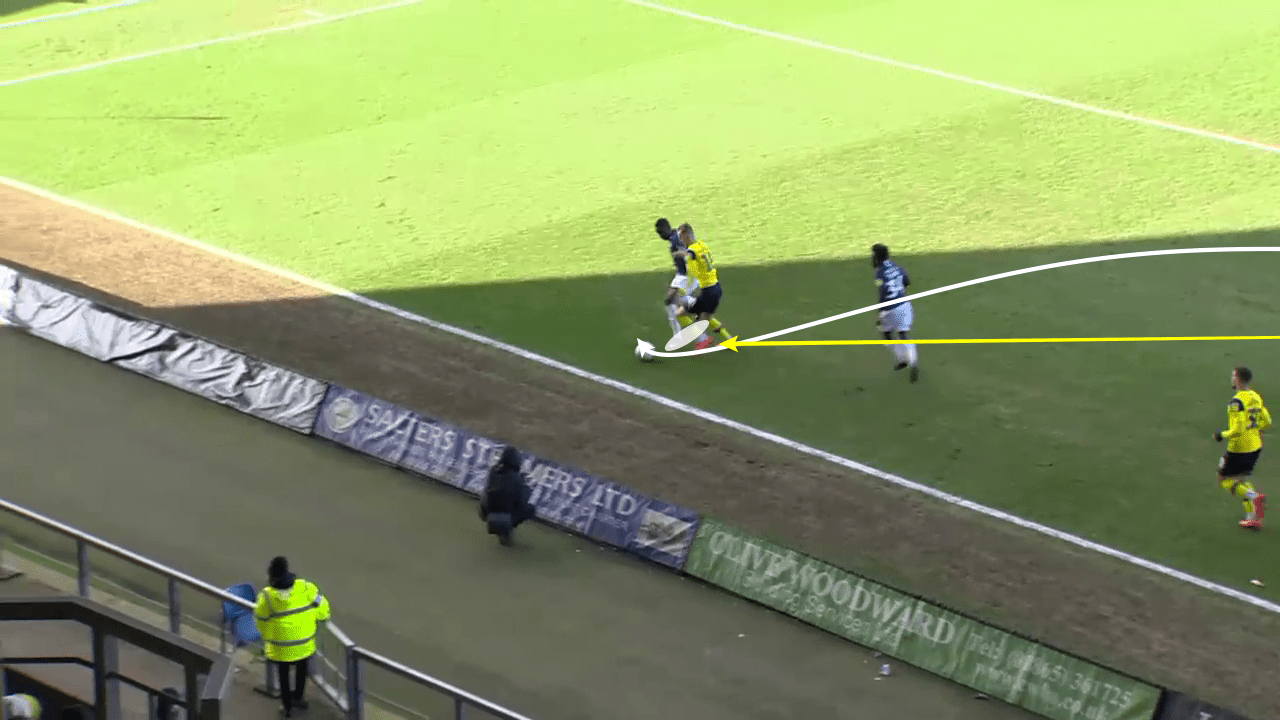
As shown in this example against Oxford, Bwomono tracks back and shows the winger wide with good body positioning which forces the opposition wide. Using his pace and strength, he is then able to position himself between the attacker and the ball and can regain possession. Supported by his team-mates in helping to force the winger to the touchline, Bwomono’s excellent positioning and posture allows him to make the situation an easier one for him to face up to.
This suits Bwomono, as it is actually when players look to take him on in a one vs one situation where he struggles more. With both players moving in the same direction, he is far more comfortable than when being taken on. This is in part due to his positioning which allows him to make life difficult for the rival before they can begin to take him on.
Weaknesses
As has been seen, Bwomono is a tactically astute player but at the age of 21, he still has room to improve. Many of his greatest weaknesses are more related to his technical abilities which he has not yet brought up to scratch, rather than tactical unawareness. In particular, his crossing and aerial ability present areas of his game which let him down and do provide ways for opposition to force him into mistakes.
Crossing
What is clear is that Bwomono brings a real attacking threat and is a key part of Southend’s transition play. This enables him to bring the ball forwards quickly and effectively, turning defence into attack. However, what lets him down is often his final ball and decision-making in the final third. In particular, his crossing is very disappointing.
This season, there have been improvements. His success rate is up from 22.8% to 25.5%, whilst also reducing the quantity from 2.8 per game to 2.46, but there remains plenty of work to do. His cross weighting and accuracy are poor, often floating a ball into the box rather than aiming for a specific target.
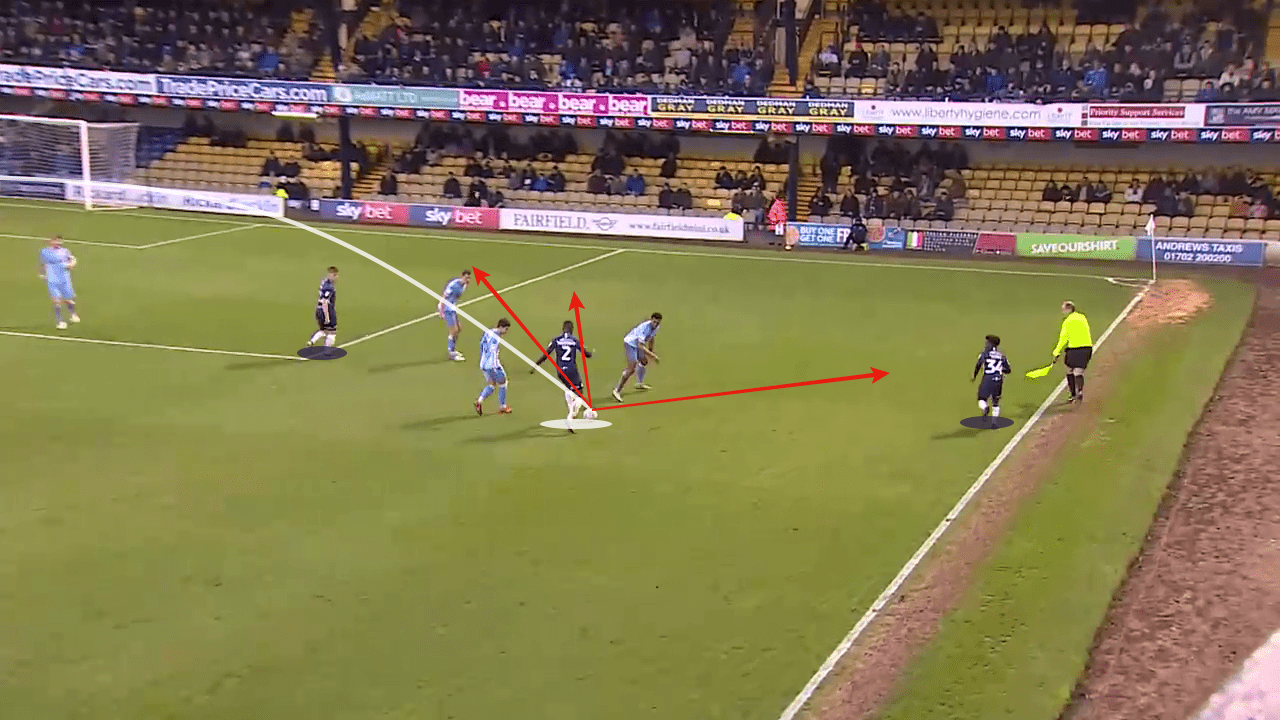
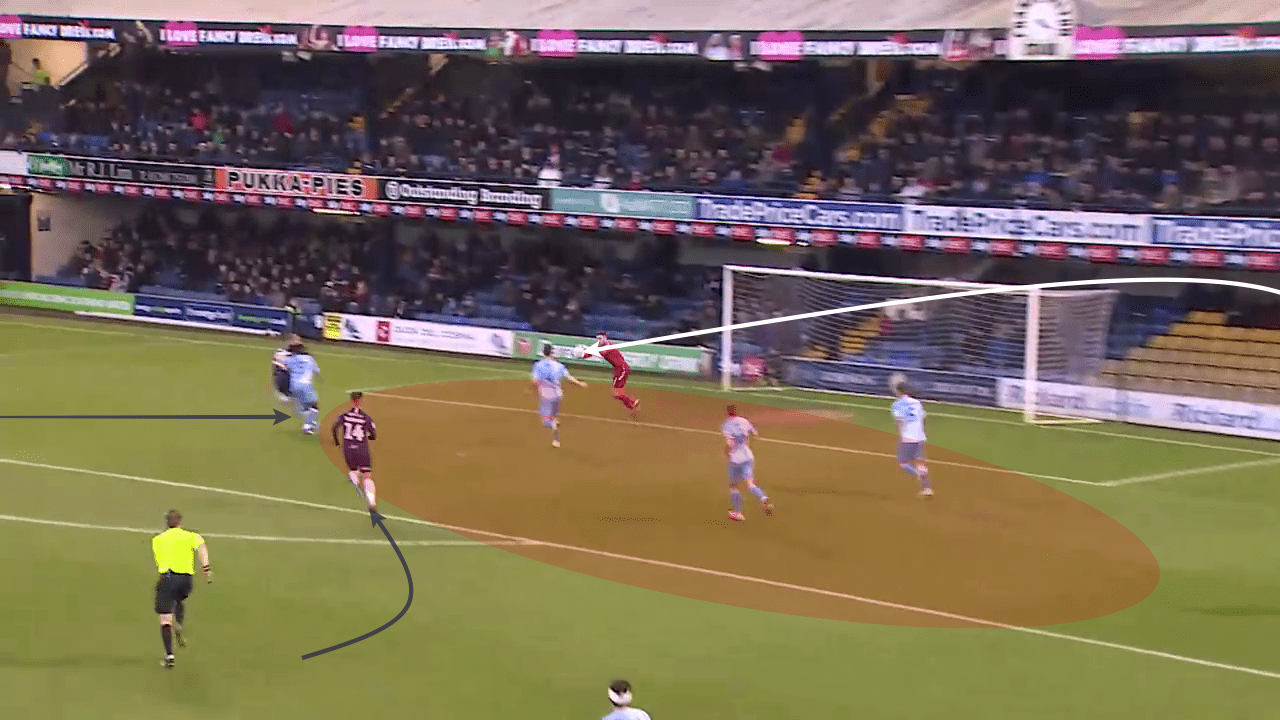
In this Southend team, it must be recognised that there are very few attacking options for him to aim at in the box. The departure of figures like Simon Cox and Tom Hopper and the injury to Stephen Humphrys has not helped Bwomono at all in this regard. Still, despite this, Bwomono has shown that he has struggled to adapt his game to this new scenario since January.
Often, like in the images above from the game against Coventry City, Bwomono is often guilty of taking the risky option of delivering a hopeful cross rather than taking a simple option of a short pass, most often after a long run forwards. As can be seen, Bwomono has several options to play to team-mates or to continue bringing the ball forwards himself, but instead opts to deliver a cross into an empty penalty area.
Tactically, Southend have not had great reliability upon crossing this season, particularly since January. This has suited Bwomono, who can instead look to pick up on the movement of the likes of Charlie Kelman and Brandon Goodship with passes through to runs off the shoulder of the last man. On the left, before being struck down by injury, Nathan Ralph would tend to focus more on crossing. Since his injury, Southend’s game has adapted to be a more gradual build-up with a shorter average pass distance.
Aerial ability
Another area which lets down Bwomono is his ability in the air. This is a more concerning weakness for Southend given that this is an area where they are regularly targeted by opposition teams. While at right-back it is not as essential an attribute as when playing as a central defender, it still plays a part in his game and one he can improve at.
This will regularly require Southend’s central defenders, who have failed to build a regular pairing all season, to provide cover or drift across to counter a player who has got in behind Bwomono’s failed aerial interception. This is a way in which opposition have found a way to open up spaces in the middle, with the likes of White or Joe Shaughnessy coming across to the right, often dragged by strikers they are marking, and allowing gaps through the middle for offensive-minded midfielders to exploit.
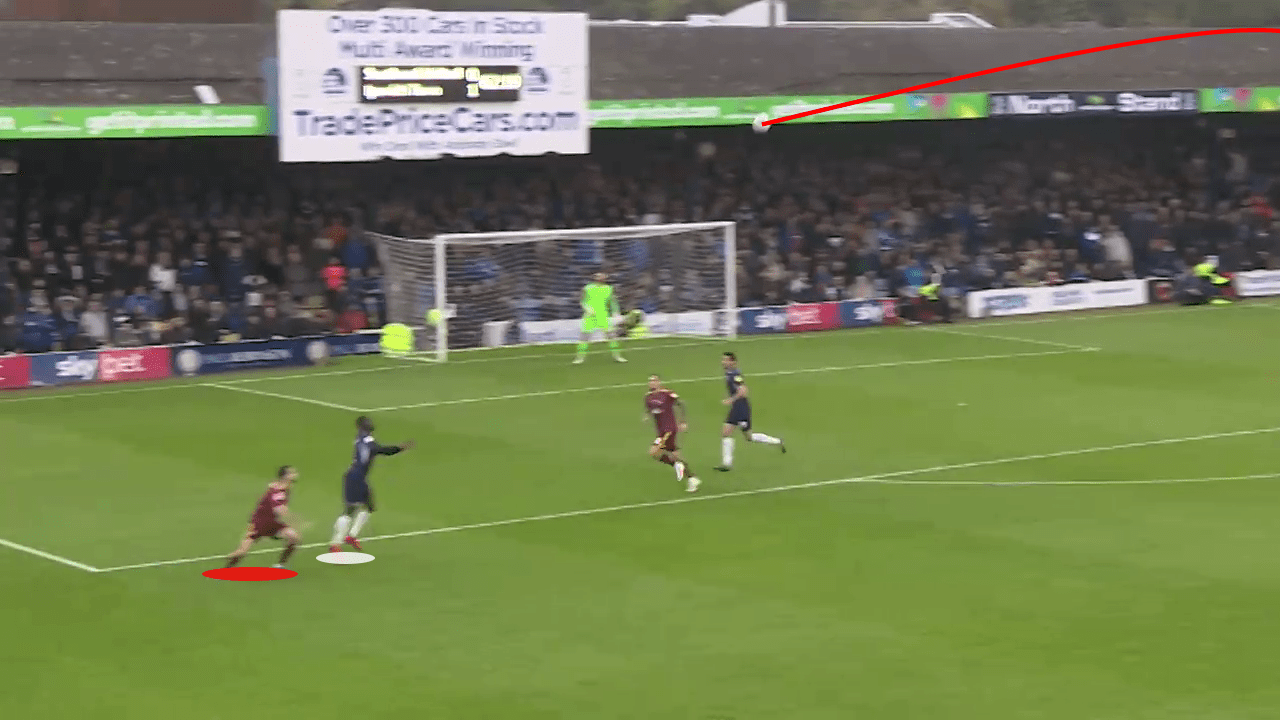
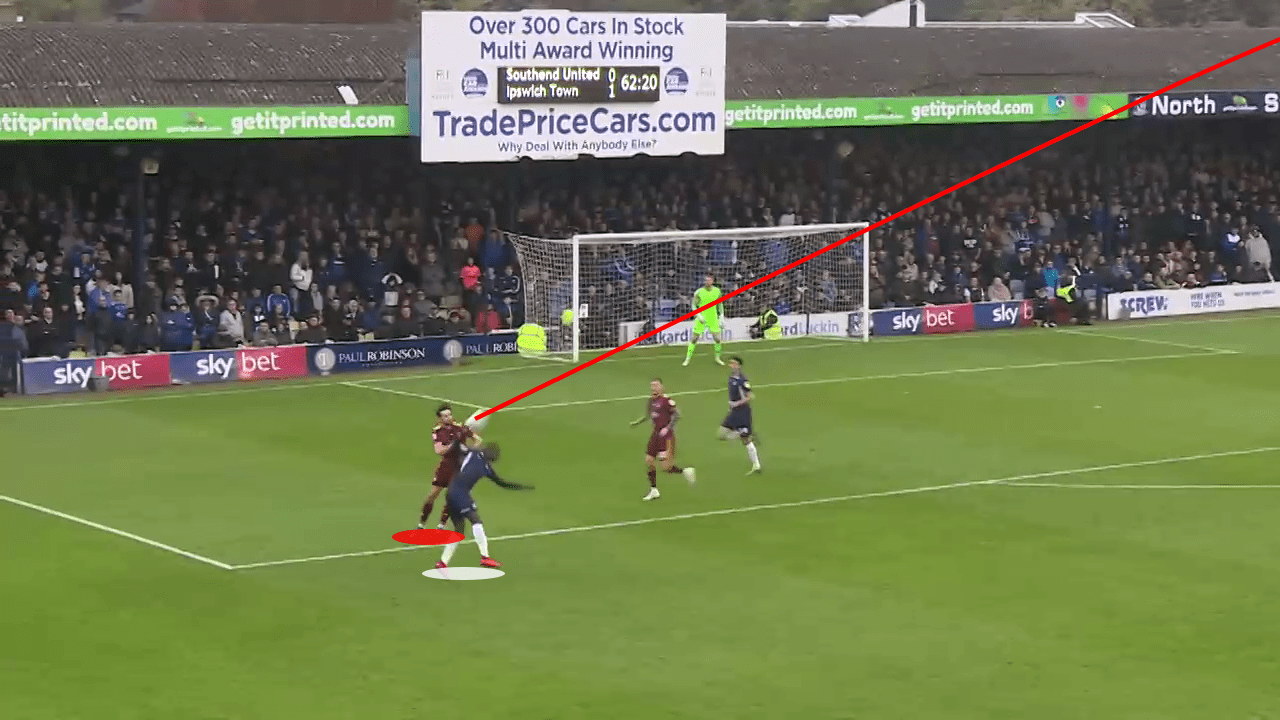
Again, this is a technical issue. As can be seen in these images against Ipswich, Bwomono regularly tends to jump too early. This makes it easy for rivals to outmuscle him or adapt their anticipation, sometimes getting in behind. For Bwomono, it presents an unnecessary vulnerability which further serves to distort the defensive positioning of his teammates.
However, he is still improving in this area. In 2018/19, the success rate was 44.9% and it is now up to 50%. Much like how his positioning has improved rapidly, his aerial ability must now be a key focus for Bwomono and Campbell may be the ideal coach to help him improve this area of his game. If he can continue to improve at this rate, it will be promising. For now though, it has given teams a weakness in his game which they have looked to exploit in order to open up spaces in Southend’s defence.
Conclusion
There can be no questioning the fact that there is a great talent in the case of Bwomono. The right-back may be available this summer should he prefer to push on rather than drop into League Two and his quick learning and tactical intelligence will catch the eye of many. Should he be able to develop his technical attributes in some cases, as he has improved his tactical knowledge, Bwomono may well become a regular for a club higher up the ladder.
Having already displaced the experienced Demetriou and established himself, he looks like a talent who could follow in the footsteps of the likes of Isaac Hayden, Glen Kamara, or Daniel Bentley in leaving Southend to establish themselves at a bigger club having come through their youth system. In the case of Bwomono, it seems inevitable that he will achieve such growth.





Comments